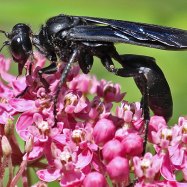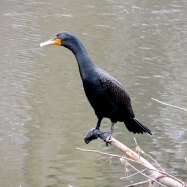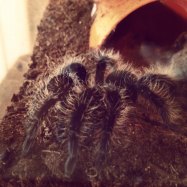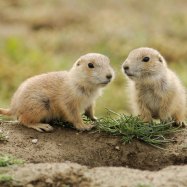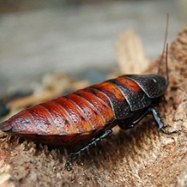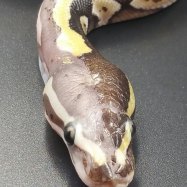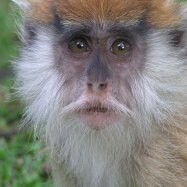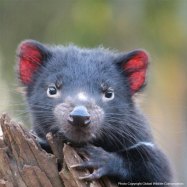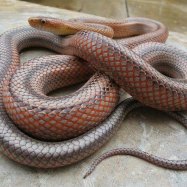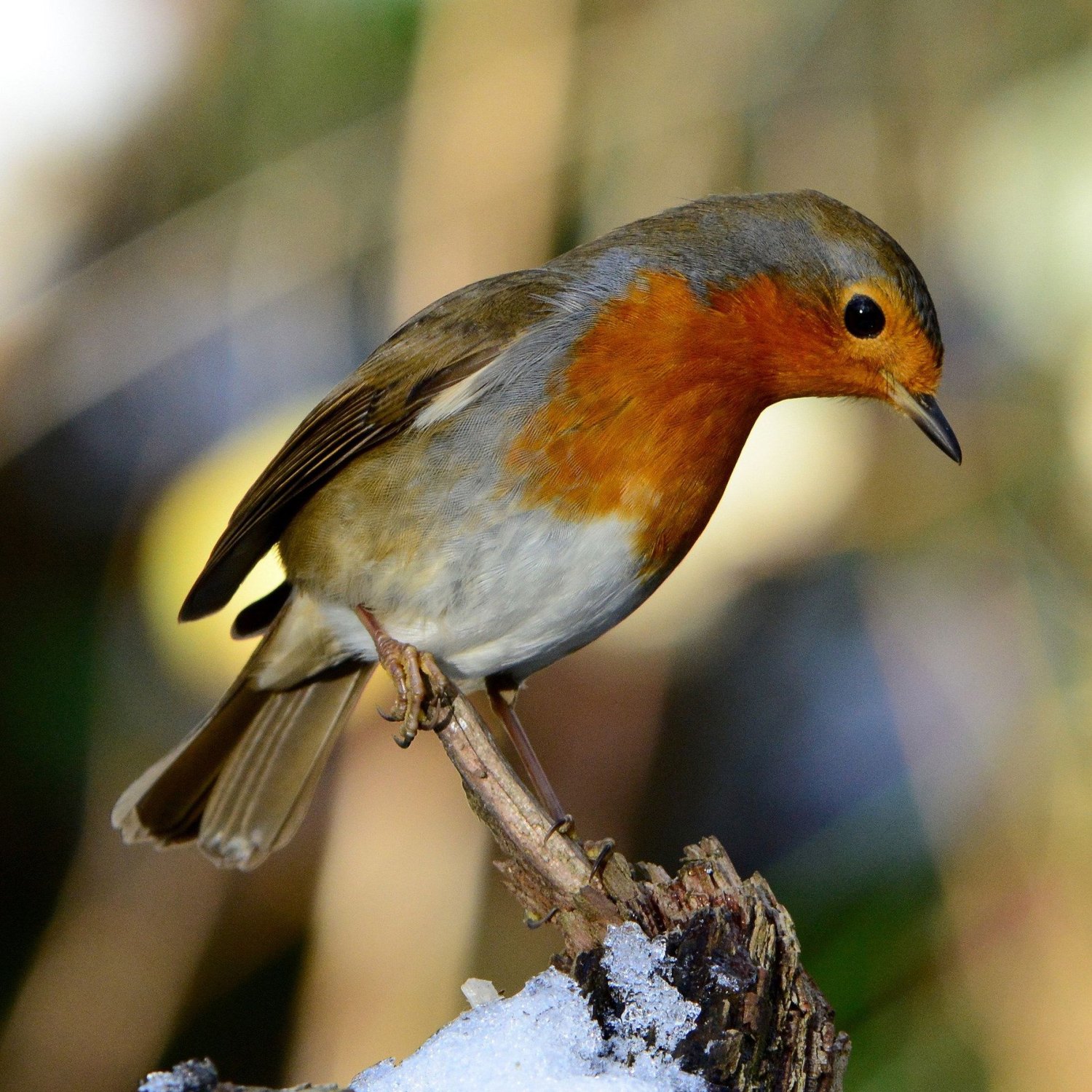
European Robin
13-14 cm (5-6 in)
The European Robin, also known as the Redbreast or Robin Redbreast, is a small and compact bird with a length of 13-14 cm (5-6 in). It belongs to the Muscicapidae family and can be found across its range, from Western Europe to Central Asia. These charming birds are known for their distinctive red breast and playful behavior, making them a favorite among birdwatchers and gardeners. Next time you spot a friendly robin in your backyard, remember its scientific name Erithacus rubecula and its role in maintaining the balance of nature.
Animal Details Summary:
Common Name: European Robin
Kingdom: Animalia
Habitat: Woodlands, forests, gardens, parks
The European Robin: A feathered friend in your garden
Imagine walking through a quiet woodland, the gentle sound of birds singing in the air, and suddenly, a small, vibrant bird lands in front of you, cocking its head curiously. You recognize it as the European Robin, with its bright orange-red breast and brown upperparts. This scene is a common sight in Europe, where this friendly bird calls home.Scientifically known as Erithacus rubecula, the European Robin is a staple of the continent's woodlands, forests, gardens, and parks European Robin. Its endearing nature, beautiful coloration, and helpful role in the ecosystem make it a beloved and iconic species in Europe. In this article, we will take a closer look at the European Robin, its unique features, and its important role as a friendly, feathered gardener in its habitat.
A Proud Member of the Animal Kingdom
The European Robin belongs to the animal kingdom, one of the most diverse and fascinating kingdoms in the world. Along with other animal species, the European Robin is a member of the chordate phylum, meaning it has a spinal cord and a backbone. Within this phylum, the European Robin belongs to the class Aves, or birds, a class renowned for their ability to fly.As a bird, the European Robin also belongs to the order Passeriformes, which includes over 6,000 species of small, perching birds. The European Robin is a particularly charming member of the order, with its small and compact body shape, reaching a length of 13-14 cm (5-6 inches). Its small size and agile movements make it a delightful bird to observe in the wild.
A Family of Flycatchers
The European Robin is a member of the family Muscicapidae, a group of migratory birds commonly known as flycatchers Elephant Shrew. This family is widespread throughout the world, with over 300 species. The flycatchers are named for their insectivorous diet, and the European Robin is no exception. These birds are skilled at catching insects in flight, making them valuable for pest control in their habitat.Within the family Muscicapidae, the European Robin is classified as a chat, a group of small insect-eating birds with slender bills and long wings. Other members of the chat group include the Nightingale and the Black Redstart, both commonly found in Europe. With its unique combination of coloration, size, and behavior, the European Robin stands out among its fellow flycatchers.
A Habitat Full of Life and Song
The European Robin's habitat extends across Europe, as well as western Asia and North Africa. Within this range, it can be found in a variety of woodland, forest, garden, and park habitats. This adaptability is due to the European Robin's omnivorous diet, which includes not only insects but also fruits, seeds, and worms.In Europe, the European Robin is a common sight in gardens and parks, where it has adapted well to living alongside humans. Its delightful red breast and friendly demeanor make it a popular visitor to backyard bird feeders and gardens. In the wild, the European Robin's beautiful song can be heard throughout the day, as it marks its territory and attracts a mate.
A Helpful Garden Companion
The European Robin's adaptability and friendly nature make it a favorite among gardeners and bird enthusiasts. But beyond its aesthetic value, this little bird plays a crucial role in its ecosystem. As an insectivore, the European Robin helps to control insect populations in its habitat, helping to keep gardens and forests healthy.Furthermore, the European Robin plays an essential role in seed dispersal. As they forage for food, they inadvertently spread seeds and help plant new trees and plants. This is particularly important in forest ecosystems, where the European Robin acts as a vital link in maintaining biodiversity.
An Iconic Bird for Europe
The European Robin is undoubtedly one of the most iconic birds on the continent, and for good reason. Its beautiful coloration, friendly behavior, and important ecological role make it a beloved and cherished species. Throughout history, the European Robin has also held a special place in European culture and folklore.In Britain, the European Robin is often associated with Christmas, appearing on countless holiday cards and decorations. The reason for this lies in a folk story from the 19th century, where the bird is said to have obtained its red breast while trying to pull thorns from the crown of thorns worn by Jesus on the cross. This legend has cemented the European Robin's place as a symbol of goodwill and kindness.
A Bird at Risk
Despite its widespread distribution and popularity, the European Robin faces some threats in its habitat. One major concern is habitat loss, as human development continues to encroach on natural areas. Pesticide use in agriculture also poses a risk to the European Robin and other insect-eating birds, as it reduces the availability of insects for food.Climate change is another critical issue facing the European Robin. As temperatures rise, the bird's traditional breeding grounds are shifting, affecting their breeding success and survival rates. Additionally, extreme weather events, such as storms and droughts, can also impact the European Robin's habitat and food sources.
The Ripple Effect of Preserving the European Robin
Preserving the European Robin is not just about protecting a single species. This little bird plays a crucial role in its ecosystem, and its disappearance would have a ripple effect on other plants and animals. By conserving the European Robin, we are also preserving the intricate balance of our natural world.Moreover, the European Robin's delightful presence in gardens and parks is a testament to the benefits of coexisting with wildlife. Creating and maintaining green spaces in our cities and backyards not only provides essential habitats for birds but also enhances our well-being and connection with nature.
In Conclusion
The European Robin may seem like a small, ordinary bird at first glance, but a closer look reveals a fascinating and significant species. From its important role in insect control and seed dispersal to its iconic status in European culture, the European Robin has earned its place as a friendly, feathered gardener, and a beloved resident of its habitat.As we strive to protect and preserve our natural world, let us remember the European Robin and all its fellow creatures, who play an essential role in maintaining the health and balance of our planet. By working together, we can ensure that this charming bird continues to brighten our gardens and woodlands for generations to come.

European Robin
Animal Details European Robin - Scientific Name: Erithacus rubecula
- Category: Animals E
- Scientific Name: Erithacus rubecula
- Common Name: European Robin
- Kingdom: Animalia
- Phylum: Chordata
- Class: Aves
- Order: Passeriformes
- Family: Muscicapidae
- Habitat: Woodlands, forests, gardens, parks
- Feeding Method: Insectivorous
- Geographical Distribution: Europe, western Asia, North Africa
- Country of Origin: Europe
- Location: Across its range
- Animal Coloration: Orange-red breast, brown upperparts
- Body Shape: Small and compact
- Length: 13-14 cm (5-6 in)
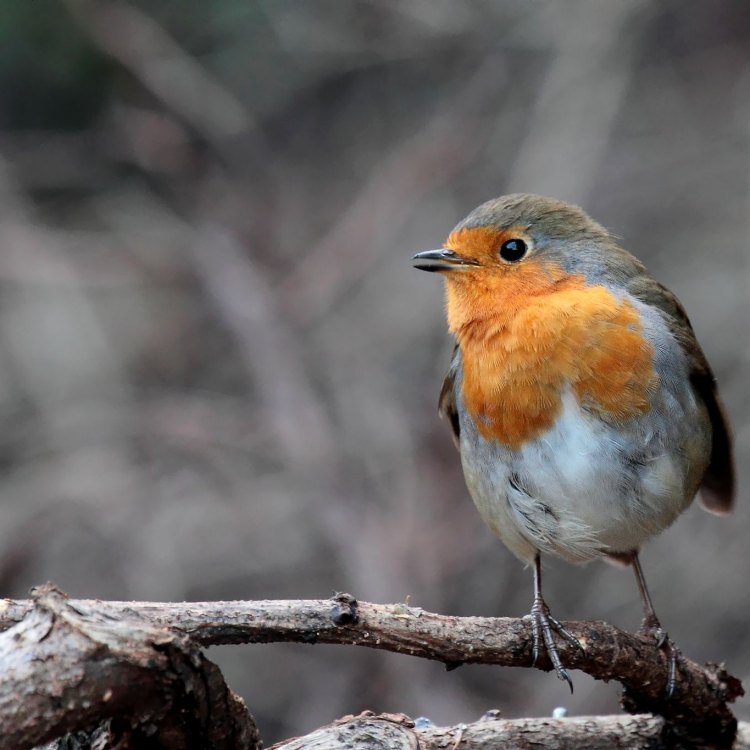
European Robin
- Adult Size: Small
- Average Lifespan: 1.1 years
- Reproduction: Monogamous
- Reproductive Behavior: Territorial
- Sound or Call: Melodious song
- Migration Pattern: Partial migrant
- Social Groups: Solitary or in pairs
- Behavior: Curious and bold
- Threats: Habitat loss, climate change
- Conservation Status: Least Concern
- Impact on Ecosystem: Seed dispersal
- Human Use: Symbolic bird
- Distinctive Features: Bright orange-red breast
- Interesting Facts: British national bird, often associated with Christmas
- Predator: Birds of prey, domestic cats
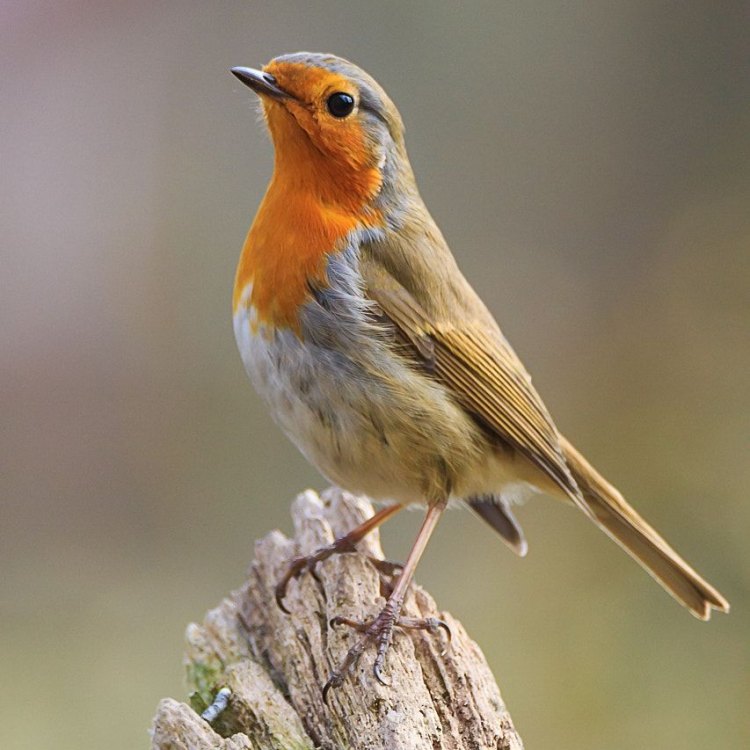
Erithacus rubecula
To Be More than a Symbol: The Fascinating Life of the European Robin
Nature is full of wonders, from the strikingly beautiful colors of a flower to the magnificent strength of a lion. Among these marvels, there is a small but charismatic bird that has captured the hearts of many and has become more than just a symbol. The European Robin, with its bright orange-red breast and melodious song, has a fascinating life that goes beyond being a national bird or a Christmas icon. In this article, we will delve into the unique features and behavior of this small but mighty bird, as well as its impact on the ecosystem and human culture PeaceOfAnimals.Com.The European Robin, also known as the Erithacus rubecula, is a species of small passerine bird that belongs to the family Muscicapidae. It is widely distributed across Europe, from western Siberia to western Europe, and is also found in parts of northern Africa and the Middle East. This brightly colored bird, with its distinctive red breast, has become synonymous with the beauty and charm of European nature.
The European Robin is a small bird, with an adult size of about 14cm in length and a wingspan of 20-22cm. Despite its small size, it has a relatively long lifespan compared to other birds of similar size. On average, a European Robin can live up to 1.1 year, with some individuals reaching up to 3 years in captivity. This longevity can be attributed to the bird's adaptability and ability to thrive in a variety of habitats, from forests to gardens.
Reproduction is an essential part of any animal's life, and the European Robin is no exception Eskimo Dog. These birds are monogamous, meaning they mate with one partner for life. However, if one partner dies, the remaining bird will find a new mate. They have a strong reproductive behavior and will fight to defend their nesting territory from other robins. The male bird will also sing melodiously to attract a female partner and defend their territory. This behavior is known as territoriality and is common among birds.
In terms of sound or call, the European Robin has a pleasant and melodious song that can often be heard in gardens and woodlands. It is a characteristic feature that has made this bird a favorite among birdwatchers and nature enthusiasts. The song is typically a succession of short notes and can have variations depending on the situation, such as when defending the nesting territory or attracting a mate.
One of the most interesting aspects of the European Robin is its migration pattern. Contrary to popular belief, not all birds migrate over long distances. The European Robin is a partial migrant, which means that while some individuals migrate to warmer regions during the winter, others stay in their breeding grounds. The non-migratory birds often migrate to higher altitudes during the colder months, while the migratory ones can travel as far as 2,000km to reach their wintering grounds. This flexibility in migration patterns enables the European Robin to adapt to changing climates and environments.
As social animals, the European Robin can either be solitary or form pairs. During the breeding season, they will defend their territory and become aggressive towards other robins. However, during the winter or non-breeding season, they can be found in small groups, searching for food together. This behavior shows their adaptability to different situations and their ability to thrive either on their own or in a group.
The European Robin is a curious and bold bird, unafraid to approach humans. This behavior has earned them the nickname "gardeners' friend" as they often follow gardeners around, hoping to feed on any insects they disturb. This curiosity and boldness have also made them a popular subject for bird photography, with their bright colors and endearing behavior.
Like any other living species, the European Robin faces numerous threats in its natural habitat. The primary threats come from habitat loss due to human activities such as deforestation, urbanization, and intensified agriculture. These activities lead to a loss of suitable nesting sites and food sources. Climate change is also a significant threat, as it alters the breeding and feeding patterns of the birds. Extreme weather events can also have a detrimental impact on the population of European Robins.
Despite these threats, the European Robin is currently classified as a species of "Least Concern" by the International Union for Conservation of Nature (IUCN). This status is due to its widespread distribution and adaptability to various habitats. However, the decline in population in some regions, particularly in the United Kingdom, highlights the need for conservation efforts to ensure the continued survival of this iconic bird.
The European Robin may be small in size, but it plays a significant role in the ecosystem. As an omnivore, it feeds on a variety of insects, small fruits, and seeds. Through its foraging activities, it helps in seed dispersal, promoting the growth of new plants and maintaining the balance of the ecosystem. This bird also serves as prey for larger birds of prey, such as hawks and owls, and is often hunted by domestic cats.
The impact of the European Robin is not only limited to the ecosystem, but it also holds significance in human culture. In the United Kingdom, it is the unofficial national bird, chosen for its iconic appearance and commonness. It is often associated with Christmas, with its cheerful colors and presence in European folklore as a symbol of new beginnings and hope. The European Robin has also been a subject of various artworks and literature, further cementing its place in human culture.
As we have seen, the European Robin is more than just a symbolic bird. It has a complex and fascinating life that is intertwined with nature and human culture. Its vibrant colors, melodious song, and inquisitive behavior make it a beloved bird among many. However, with the threats it faces and its declining population in some regions, it is essential to appreciate and protect this small but mighty bird for future generations to admire and be inspired by.
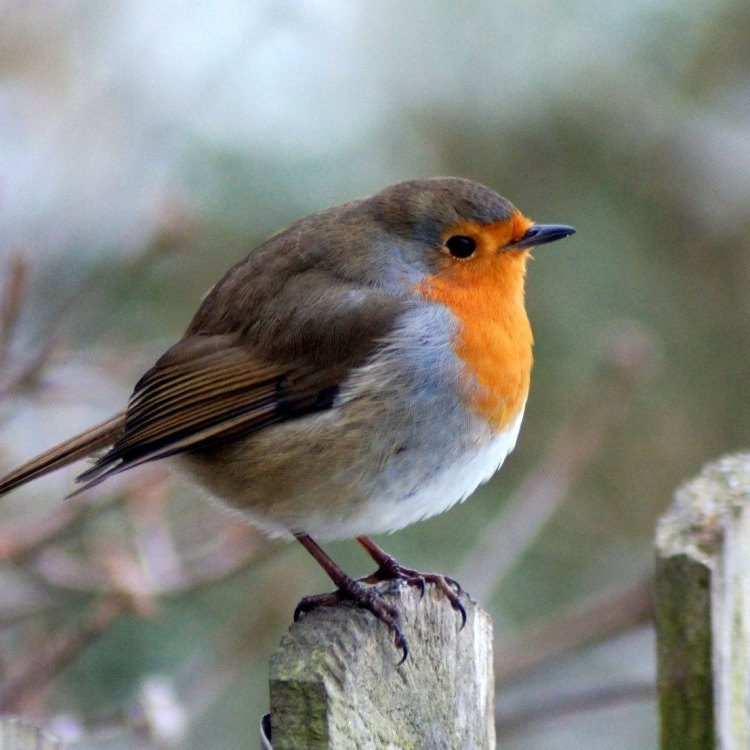
The European Robin: A feathered friend in your garden
Disclaimer: The content provided is for informational purposes only. We cannot guarantee the accuracy of the information on this page 100%. All information provided here may change without prior notice.


